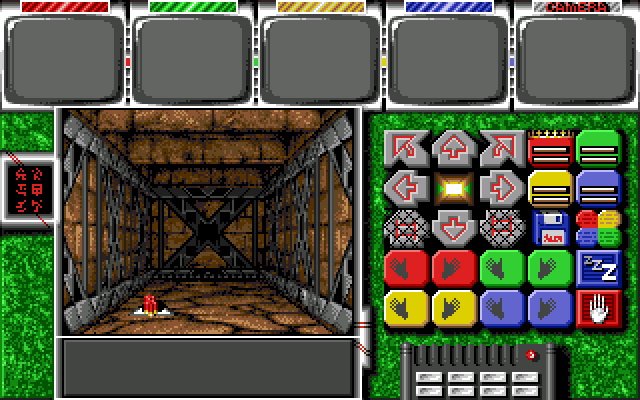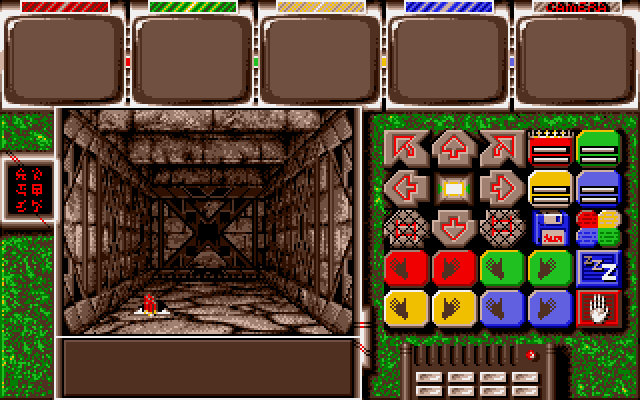
 |
Antony Crowther was born on May 10, 1965. Around 1982, when he was about 16 years old, a friend of his dad lent him a Commodore PET 4032 computer. Although this machine was quite complicated to understand, he managed to program a good version of the popular game "Mastermind". Wanting something more flexible and easier to program, he bought himself a Commodore Vic-20 computer. The possibility to play with the colors not available with the PET increased the level of excitment and he started to learn how to write machine code by himself. That resulted in a type of Galaxian game that he took to a company called "Superior Systems". They said that the game was not what they were looking for, but they did see the great potential Antony had. They loaned him a Commodore 64 and asked him to create something out of it. He came up with "Lunar Rescue", his first commercial program.
Being a grade A student in his art class, he almost went to art college before giving another shot at software development. He started working for "Alligata Software" and enjoyed it so much that he never went to art college.
While at school in his early days, Antony met Ben Daglish who had a passion for creating music. When Antony created the game "Potty Pigeon", he needed music for the death march and asked the help of Ben who accepted the task. Both of them were impressed by the quality provided by the SID (Sound Interface Device) chip of the Commodore 64 and Antony even started to follow Ben's steps in writing music for computer games. Together, they formed "W.E.M.U.S.I.C." which stands for "We Make Use of Sounds In Computers". Their work has been greatly acknowledged in the Commodore community.
 In 1983, he released "Bug Blaster" published by "Alligata Software" for the Commodore 64 computer. This action game was a clone of the arcade hit "Centipede". He went releasing other great titles for "Alligate Software" such as "Aztec Tomb" and "Blagger" all released in 1983. He worked for "Alligata Software" and "Gremlin Interactive" until 1985 when he created his own company along with Roger Taylor called "Wizard Development" which spawned the game "William Wobbler".
In 1983, he released "Bug Blaster" published by "Alligata Software" for the Commodore 64 computer. This action game was a clone of the arcade hit "Centipede". He went releasing other great titles for "Alligate Software" such as "Aztec Tomb" and "Blagger" all released in 1983. He worked for "Alligata Software" and "Gremlin Interactive" until 1985 when he created his own company along with Roger Taylor called "Wizard Development" which spawned the game "William Wobbler".
Even though he has insisted that he doesn't like playing games, he has helped creating some of the best. He remembers playing a game called MUD on the Commodore 64 where he got fed up of wizards killing him. To discourage them from attacking him, he decided to change the name of his character to "Rat", but the system wouldn't allow him. He tried "Ratt" and it was accepted, and he has kept this nickname since.
In 1987, "FTL Games" released the classic "Dungeon Master". The game featured an exciting 3D world filled with monsters and puzzles. The game attracted millions of players around the world, including Antony's brother Chris (aka SuperCC) who asked him to create a similar game. Primarily to please his brother, Antony sat down in front of his Amiga computer and started writing the game in 68000 assembler using HiSoft's GenAm. 9 months later, Captive was born.
Antony remarkably wrote the entire game by himself; the design, the code, the graphics (using EA's "Deluxe Paint"), the AI, the sound effects, everything. His brother Chris helped him by testing the game. The hardest code to develop was the level generator because of the challenge it brought to make levels look man-made. The Amiga graphics use the half-bright textures allowing 26 colors to be simultaneously displayed on the screen in 320x200. The palette had to be slightly modified for the Atari ST where only 16 colors is supported, but the code was almost left intact.

|

|
Amiga version |
Atari ST version |
The Atari version was developped and tested on 2 systems; one with 512k and one with 1mb, both borrowed from the software house. Antony initialy wrote the game for MirrorSoft, one of the company he previously had worked for. Unfortunately, the company was contacted by FTL to not produce any game similar to "Dungeon Master", so Antony had to look for another publishing house. Mindscape was the winner.